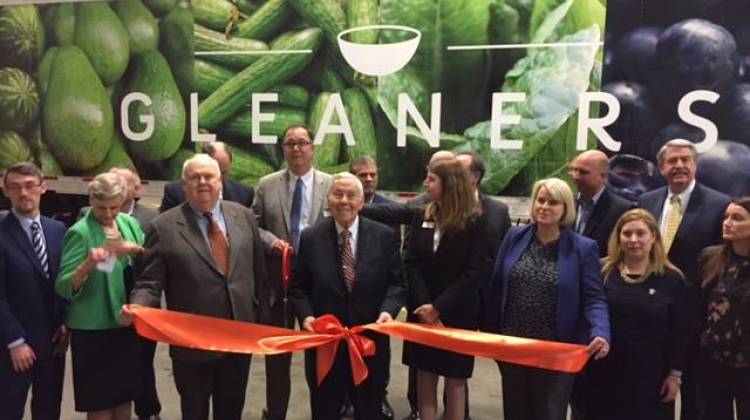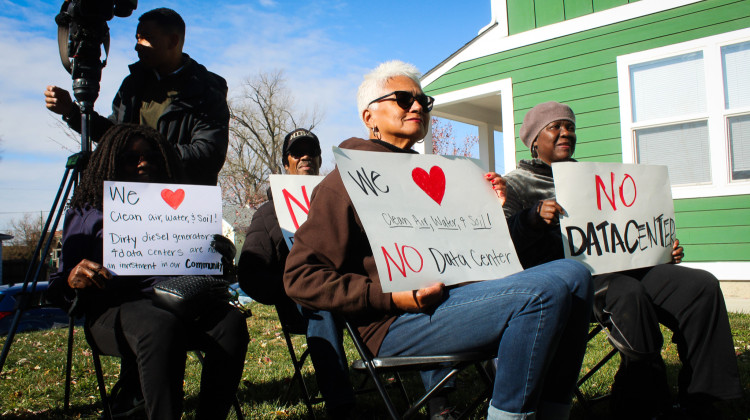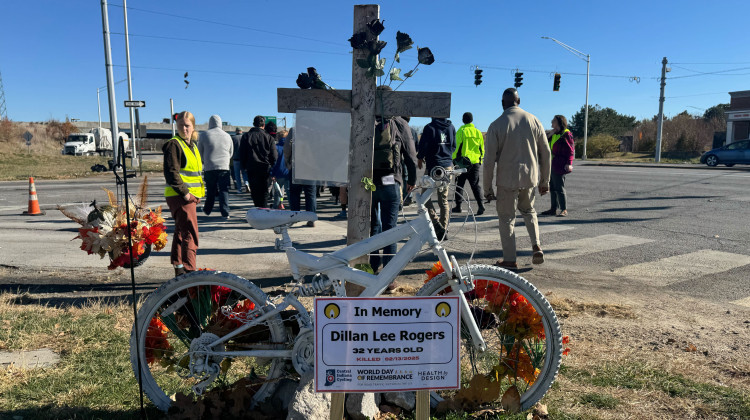
Retired U.S. Senator Richard Lugar attending the ribbon cutting for the new Gleaners produce center.
Jill Sheridan/IPBGleaner’s Food Bank of Indiana is expanding produce distribution with a new regional processing center. The Indianapolis center will now be able to supply produce to more than 40 food banks in seven states including Indiana.
Gleaners Chief Financial and Operations Officer Joe Slater says more fruits and vegetables are their number one request.
“This product that you’re seeing here, those apples came in this morning, those watermelon came in this morning and this will all we shipped back out tomorrow,” Slater says.
The effort is part of a growing conversation about the connection between hunger and health outcomes – like diabetes and high blood pressure. Gleaners President and CEO John Elliot says food insecurity is a root cause.
“It leads to or exasperates health issues, mental health issues. It is often a trigger for crime. We don’t think about the connectivity,” Elliot says.
The produce will be purchased instead of donated and then distributed by a new refrigerated trailer truck bringing an additional 20 million pounds of fresh food a year to people. Elliot says many will benefit.
“We’re going to have this huge infusion of millions of pounds of produce going out to these families that maybe have had no produce available,” says Elliot.
The project is supported through a partnership with Feeding America.
 DONATE
DONATE









 Support WFYI. We can't do it without you.
Support WFYI. We can't do it without you.